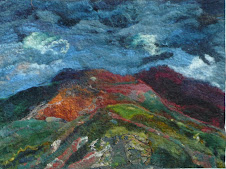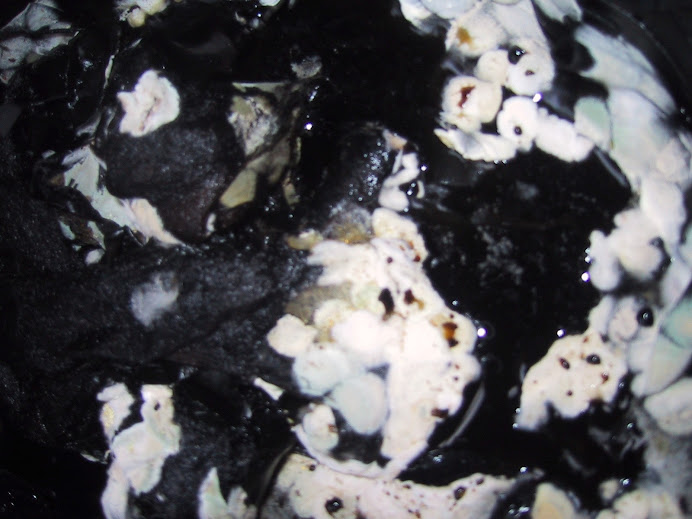For some time now she has been nurturing madder in pots. Amazing to think these rather uninspiring looking plants can produce of the greatest of dyes. These plants are two years old and so only really need another year or possibly two. before they can be used . Enys is going to give them a haircut this is, she tells me, to encourage growth.
The other plant is Coreopsis sp one of my favourites as it makes a lovely vibrant orange with ammonia.
If you have clicked on the links to see the colour you can get get from these you can see why I am really keen on them all. I hope the weld plants survive being transplanted I had very little weld last year and I really missed it.
Oh! and Happy New year to all my readers followers and friends .
May you be fulfilled
and happy
 Show all posts
Show all posts






 I probably dyed about 100-150g of fibres but I will check tomorrow when they are dry. I have not obviously done light fastness tests yet but according to John and Margaret Cannon -Dye Plants and Dyeing published by Kew Garden, cosmos sulphurous (my cosmos is in the same genus), is in the same dye group as coreopsis tinctoria and dahlia. Originally they came from Mexico and were used by the Aztecs before the Spanish invaded Central America. I first grew these plants because my mother in the last few years of her life grew them and they reminded me of her. Enys and I think I brought a packet of seeds and handed them to her but we both have been very pleased with them. They obviously have enjoyed the wet summer which is surprising as my mother lived in dry Surrey but they have been fantastic this year. So another dye plant which , like dyers chamonile, coreopsis tinctoria , lythrum salicaria and to a lesser degree genista tinctoria, is both beautiful and useful. The picked plants are already flowering again so will no doubt go in giving pleasure till the frosts come.
I probably dyed about 100-150g of fibres but I will check tomorrow when they are dry. I have not obviously done light fastness tests yet but according to John and Margaret Cannon -Dye Plants and Dyeing published by Kew Garden, cosmos sulphurous (my cosmos is in the same genus), is in the same dye group as coreopsis tinctoria and dahlia. Originally they came from Mexico and were used by the Aztecs before the Spanish invaded Central America. I first grew these plants because my mother in the last few years of her life grew them and they reminded me of her. Enys and I think I brought a packet of seeds and handed them to her but we both have been very pleased with them. They obviously have enjoyed the wet summer which is surprising as my mother lived in dry Surrey but they have been fantastic this year. So another dye plant which , like dyers chamonile, coreopsis tinctoria , lythrum salicaria and to a lesser degree genista tinctoria, is both beautiful and useful. The picked plants are already flowering again so will no doubt go in giving pleasure till the frosts come.



































